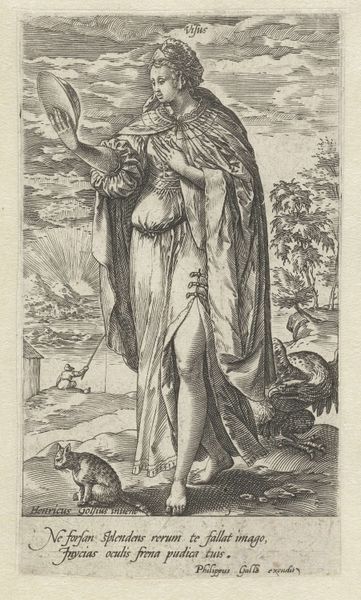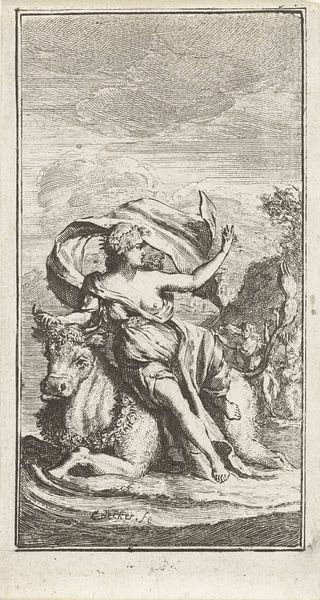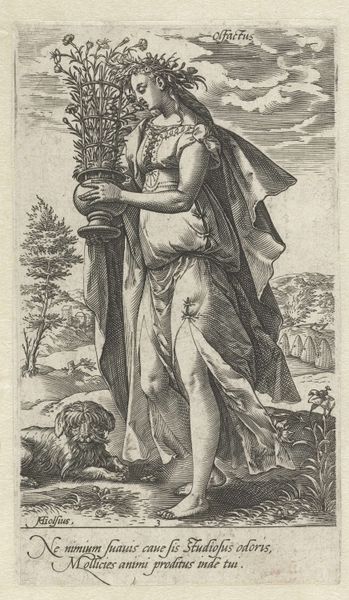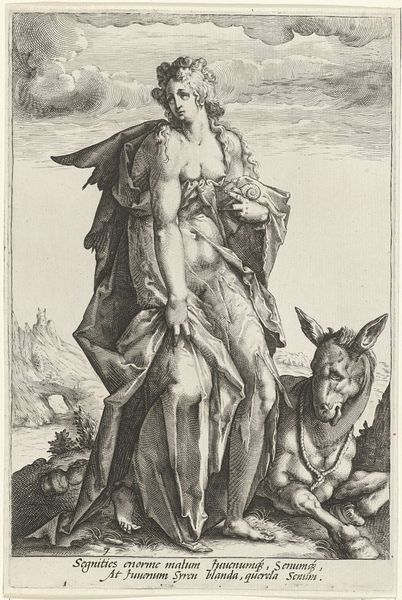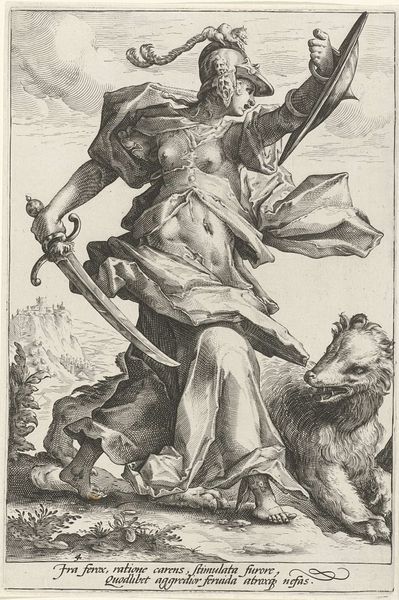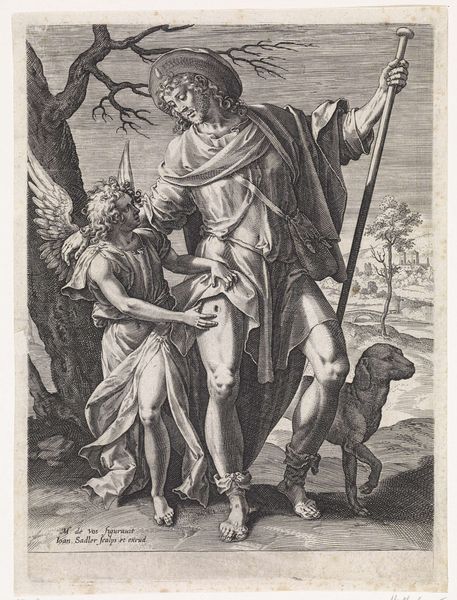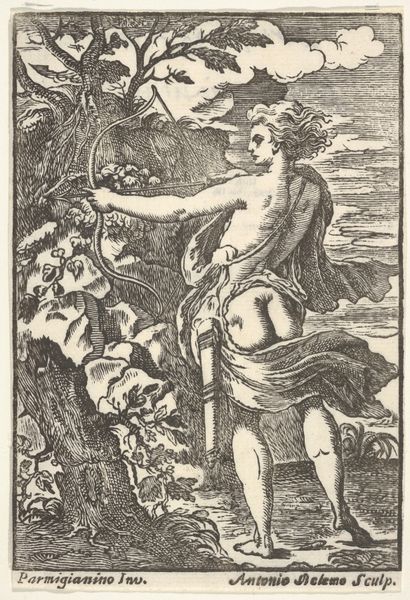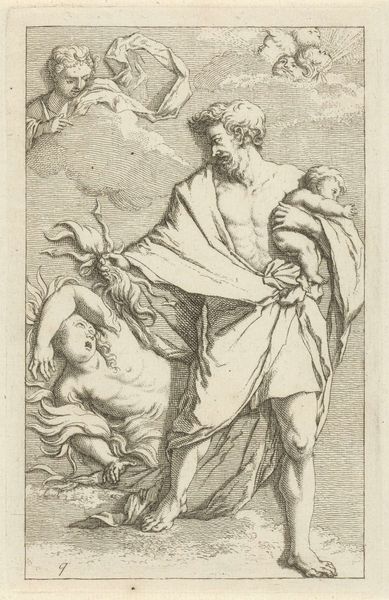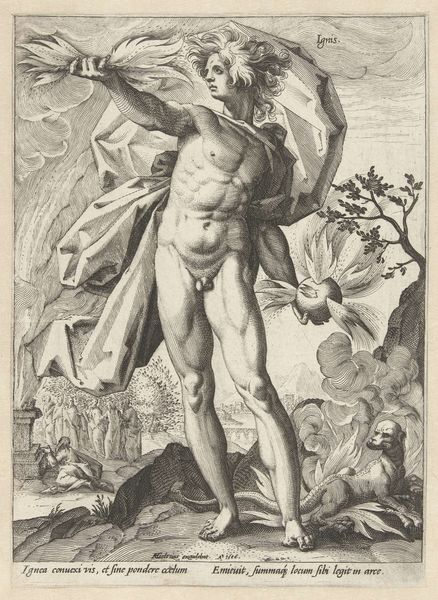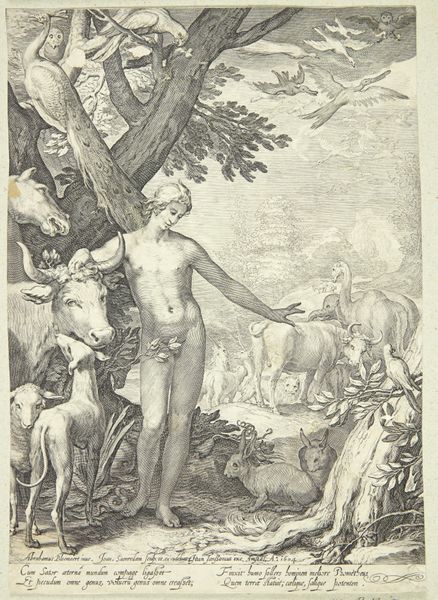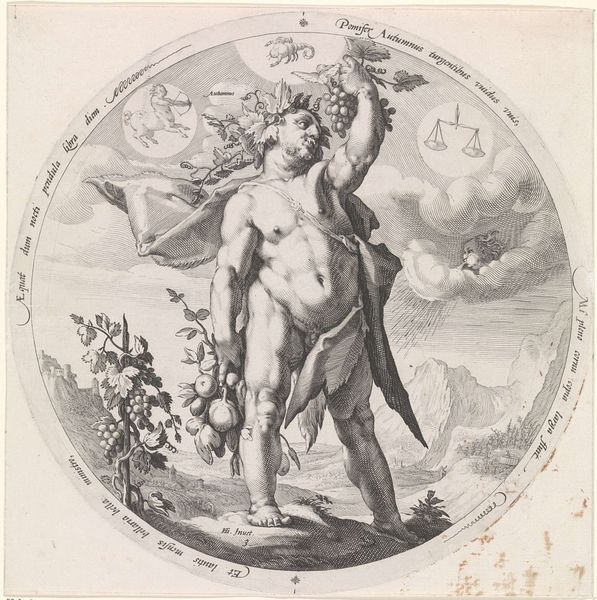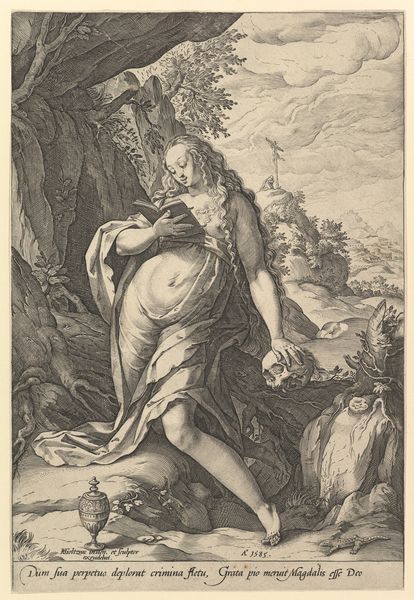
engraving
#
allegory
#
baroque
#
old engraving style
#
landscape
#
surrealism
#
engraving
Dimensions: height 252 mm, width 171 mm
Copyright: Rijks Museum: Open Domain
Curator: Looking at "Reuk," an engraving by Nicolaes Jansz. Clock from 1596 currently at the Rijksmuseum, we can begin to deconstruct its making. The very nature of an engraving speaks volumes about the labor and the process of artistic creation at the time. Editor: It's interesting, how the figure is both classical in form, like an allegory, yet set within a naturalistic, almost surreal landscape. I am intrigued by the symbolism and curious about your overall reading. What do you see in this piece? Curator: Absolutely! Focus on the labor required to produce this image through engraving, meticulously transferring an image onto a metal plate through careful cutting. What does this imply, thinking about accessibility, circulation, and, potentially, even the economics of images at the time? This isn’t a unique painting, but a reproducible image. How does the capacity of an engraving, as a mode of artistic production and consumption, open a broader discussion of art’s role within the culture and economic systems of the time? Editor: I see, it allowed for broader dissemination of art to a wider audience beyond the elite, who could have original paintings. The labor element is definitely there – mass production! Curator: Exactly! It's more than just aesthetics; it's a piece of cultural artifact revealing the interplay of labor, technology, and cultural distribution. We are questioning how the making of art and material circumstances impact on the development and reception. Editor: I never thought about the printing as a key element of the analysis! Thank you. Curator: Anytime! It provides a rich landscape for examining not just art, but the structures that uphold it.
Comments
No comments
Be the first to comment and join the conversation on the ultimate creative platform.


